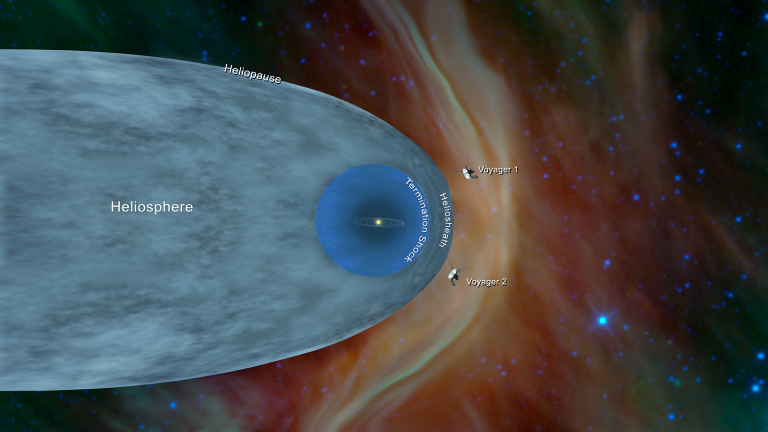It’s only the second object made by humans to ever reach this distance, following Voyager 1 in 2012.
The long journey: Since launching more than 40 years ago back in 1977, the probe has traveled 11 billion miles to get to cross into interstellar space. While it launched before Voyager 1, its flight path put Voyager 2 on a slower path to reach this milestone.
What does that mean? No, Voyager 2 hasn’t left the solar system. Our solar system is huge and goes way beyond its last planet. Instead, it means Voyager 2 has left the heliosphere, the pocket of particles and magnetic fields created by our closest star. Solar wind, the charged plasma particles that come out from the sun, generates this bubble.
How do they know? Today NASA announced that on November 5, researchers saw a steep drop-off in the speeds of solar winds around the probe. Now no solar wind is being observed, indicating the craft is in interstellar space.
What now? It’s estimated it will take about 30,000 years for Voyager 2 to leave the solar system by flying beyond the Oort Cloud, a spherical field of icy objects that surrounds the sun, way beyond the furthest planets. Sadly the spacecraft won’t still be sending us data at that point. Right now it takes about 16.5 hours for scientists to receive data from the spacecraft, and it has an estimated five to 10 years of life left. In that time it will relay back new information about the new environmental conditions that surround it.

